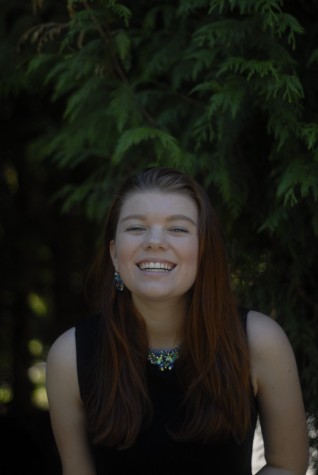Students embrace African culture through club
December 17, 2015
Mike Sweeney, a stand-in substitute for the first semester of I.B. Social Anthropology SL while Julia Blattner is away on maternity leave, is the mastermind behind the development of the African Student Union, a new club created this year that focuses on learning about cultures from around Africa.
The idea for the club came after Sweeney brought Yingwana Khosa, the exiled South African who was expelled after taking part in the Soweto Student Uprising in 1976 during the apartheid era, into his anthropology classes. Khosa is a close friend of Sweeney’s and teaches African drum styles at different schools around Portland.
On Saturday, Nov. 14, Sweeney hosted a party in his decked out garage with the purpose of raising money for Mic Crenshaw to fund his fourth trip to Africa where he will interact and perform in different communities and do a circuit lecture on the history and importance of hip hop music within America and parts of Africa. Mic Crenshaw is currently the co-manager of KBOO Community Radio, a human rights activist, and rapper. Performers not only included Mic Crenshaw and his wife but also the Afrikan HipHop Caravan, which is a non-profit grassroots organization that works to inspire social action and creativity within communities.
However, the biggest spotlight was by far on the African Student Union who had their first public performance as a group that evening. The six students performing gathered around a set of South African drums for a piece Khosa had taught them before moving on to a dance and a game that involved tapping empty soda cans together.
“It was pretty cool because we…performed in front of a big audience,” said Zawadi Boti, co-president of the African Student Union. According to Sweeney who watched the crowd during the performance, the performers were received wondrously and everyone was smiling and there was a very positive and supportive energy.
That energy could be found all the way at the start when Sweeney’s classes began learning how to drum from Khosa and Sweeney saw a need for the African Student Union.
“When Yingwana Khosa came in, all the classes responded well. But African-born students in particular responded in a way that seemed to say there needs to be something more, so I thought, why not?”
“There are a number of kids who come to that class who are not African born or African American–white kids. And, they might want to bring some stuff too,” said Sweeney.
The club has gained quite a lot of support too. Zawadi Boti remembers 13 students came for their first meeting and at least 36 people signed up at the club fair. “I’m pretty excited to teach and learn new things from other people,” said Boti.
The African Student Union is a continuation of work done by Lynne Allers, the current I.B. Anthropology HL, Chinook Academy Global Studies, and Epic Issues teacher. Working with a partner by the name of Tasha Triplett, the two developed the D.R.U.M curriculum, which recognizes the importance of African-based cultural forms and has allowed Ghanaian music culture to communicate with American hip hop. Khosa has also brought his distinctive South African experience into the multitude of African music within America. The African Student Union can be a place where different forms of African cultures can thrive within the Cleveland community.
Sweeney discussed the importance of an outlet like the African Student Union at Cleveland. While working at Lincoln High School, he noticed a major separation between minorities and white students at the school. “Students who are from minority groups within a school often don’t feel the same comfort that students from the majority culture feel. African American students reported that they didn’t feel very comfortable, they didn’t feel like they particularly had a home or a place,” he said.
With the help of three black faculty members, Sweeney started a class where black students could feel more comfortable; the majority of the students taking the class were black. “In other words, they had a place they could come where they could discuss their concerns and common interests with people more like them than unlike them,” said Sweeney.
He strives to do the same for Cleveland. “I guess I’ll start by saying almost every public school in America has a problem with how race is conceived and whether or not race makes a difference in how people perceive one another. From what I’ve seen so far, there seems to be a lack of behavioral interaction. So unless white students and non-white students are routinely seeking one another out and forming relationships, then they will act separately,” said Sweeney.










